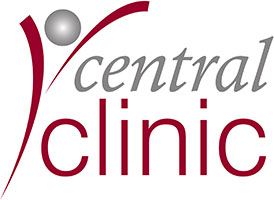Vaccination is administration of antigenic material (the inactivated germ or a part of it) that boosts up your immunity to a disease. It is considered to be the most effective method of preventing infectious diseases.
Vaccines stimulate the immune system and make the immune system ready to fight against a disease. The immunizations can be made more effective with periodic repeat injections or “boosters”. It increases our ability to fight diseases that may be contagious or even fatal. Vaccinations are important for adults as well as for children.
Vaccines containing dead or inactivated germs when introduced into the body the immune system react to the vaccine by making antibodies. These antibodies help protect from disease when similar germs invade the body in future.
Infectious diseases are contagious and spread from one person to other. Vaccinating large population may avoid the spread of disease in a community and with the time the disease can be eradicated from the society.
Some of the common vaccinations include the following:
- Hepatitis B Vaccine – Hepatitis B virus targets the liver and hepatitis B vaccine (HBV) can prevent your child from developing chronic liver disease or liver cancer in future. It is administered three times, the first dose is given within a short period after birth for all infants before hospital discharge; the second and third are usually given at 1 to 2 months and 6 to 18 months of age.
- Pneumococcal Vaccine – The Pneumococcal vaccine (PCV) offers protection against the infections such as meningitis, blood infections, and pneumonia caused by pneumococcal bacteria. PCV immunizations are given as a series of four injections at ages of 2- , 4- , 6- months and last dose between 12 and 15 months.
- Diphtheria, Tetanus, and Acellular Pertussis Vaccine – Diphtheria, Tetanus, and acellular Pertussis Vaccine (DTaP vaccine) is a combination vaccine against diphtheria, tetanus and pertussis. The DTaP is scheduled as a series of 5 injections at ages 2- , 4- , 6- months, between 15 and 18 months, and the last dose between 4 and 6 years. After these initial shots, a booster dose of the vaccine Tdap must be administered between 11 and 12 years or to the older teens and adults those who have not received a booster with pertusis coverage. Booster doses of Td (tetanus and diphtheria) should be given every 10 years thereafter.
- Hemophilus Influenza type B Vaccine – Hemophilus influenzae type B (Hib) disease is a serious condition caused by hemophilus influenzae type b bacteria. The Hib vaccine is given at ages 2- , 4- , and 6- months and a booster dose is given between 12 and 15 months. It provides long term protection from Hemophilus influenza type b infections.
- Poliovirus Vaccine – Inactivated poliovirus vaccine (IPV) is administered to protect your child from polio. Poliomyelitis or polio is a disease caused by polioviruses that can damage the nervous system, cause paralysis and can lead to death. Poliovirus vaccine is usually given at four doses at age 2 months, 4 months, between 6 and 18 months and between 4 and 6 years.
- Influenza Vaccine – Influenza, commonly called as flu is a contagious respiratory tract infection caused by influenza viruses. Influenza vaccine is recommended for all people aged 6 months and above. Influenza vaccines were administered during the outbreak of H1N1 flu.
- Measles, Mumps, and Rubella vaccine– The measles, mumps, and rubella (MMR) vaccine protects against measles, mumps and rubella. The MMR vaccines are injected as two doses, the first dose between 12 and 15 months and the second dose between 4 and 6 years.
- Varicella Vaccine – Varicella vaccine protects against chicken pox, one of the common and a highly contagious childhood viral disease. The vaccine is recommended in children between 12 and 15 months, followed by a booster dose between 4 and 6 years for further protection.
- Meningococcal Conjugate Vaccine – The meningococcal conjugate vaccine (MCV4) is a vaccine used to protect infants and young children against meningococcal disease, a bacterial infection caused by meningococcal bacteria. It is usually given between the age of 11 and 12 years.
- Hepatitis A Vaccine – Hepatitis A infection causes flu-like symptoms. The vaccine is given at two doses, first dose at 12 months and second dose at 18 months.
- Rotavirus Vaccine – Rotavirus is the leading cause of diarrhoea among infants and young children. The vaccine which is a liquid given by mouth in a three dose ,first dose at 3 months, second dose at 4 months, and third dose at 6 months. The third dose must be given before 32 weeks of age.
- Human Papilloma Virus Vaccine – Human papilloma virus (HPV) infection is the most common sexually transmitted infection that causes genital warts and precancerous changes in the uterine cervix leading to cervical cancer. The vaccine is recommended in a three dose schedule over a 6 month period; in girls, the vaccine is recommended between 11 and 12 years and also in older girls who were not vaccinated before. The vaccine is recommended for boys between 9 and 18 years to prevent the development of genital warts.
Side effects
Some vaccines may cause mild temporary side effects such as fever and soreness or swelling and redness at the site of injection. Serious reactions are rare and if any serious reactions are observed consult your doctor immediately. Your doctor may discuss with you all the possible risks and benefits of immunization.

Injections
Cortisone Injection
Cortisone is a hormone released by the adrenal gland in response to stress. It is a potent anti-inflammatory agent. Synthetically produced cortisone is more potent and longer acting than natural cortisone and is used for diagnosis as well as treatment of a variety of musculoskeletal conditions such as tendinopathy, bursitis and arthritis.
Artificial preparations containing cortisone are injected directly into the affected joint to relieve pain and reduce inflammation. Cortisone injections produce a significant reduction in pain and inflammation in a majority of cases. The duration and degree of the beneficial effect can vary from patient to patient. It takes about 2 to 3 days for the cortisone injection to produce any effect. In some individuals these injections may not produce any effect. The frequency of cortisone injections is limited by the risk of tendon rupture and damage to cartilage.
Cortisone injections offer significant relief in pain & inflammation however is associated with certain adverse effects. The most common side effect of cortisone injection is a “cortisone flare”, a condition where cortisonecrystallizes in the injected area and causes severe pain. It usually occurs in the first 24-48 hours after the injection and lasts for a couple of days. It can be managed with the help of ice packs and analgesics. Other adverse effects associated with cortisone injection may include:
- Infection at the injection site: It is a rare but serious complication and may be associated with fever along with pain and swelling at the injection site. Antibiotics may be prescribed for the management of infection.
- Transient elevation in blood sugar in patients with insulin dependent diabetes: This may last for up to 10 days. Diabetics should consult their doctor before the procedure for temporary modification of their medication.
- Redness and flushing of the face: This may occur on the second or third day of the procedure and may last for about 7 days. Antihistamines can be used if the redness fails to resolve.
- Risk of tendon rupture, if injected into a tendon
- Superficial injection may be associated with localised skin and subcutaneous fat atrophy as well as hypo-pigmentation (whitening of the skin) at the injected site
- Prolonged high dose steroid therapy may be associated with avascular necrosis of the head of the femur or humerus.
In case of any adverse reaction contact your doctor immediately.

